Washington state officials said last month that they destroyed the first Asian giant hornet nest of the season, but that didn’t stop the invasive insects from attacking officials.
Washington State Department of Agriculture managing entomologist Sven-Erik Spichiger said at a recent press conference that this group of so-called murder hornets was ‘more aggressive’ than the one found in 2020.
Spichiger added that upon vacuuming the hornets to remove them, the hornets exploited the the hole in the decaying tree where the nest was and they became aggressive.
Scroll down for video
‘Upon starting our vacuuming, because the tree was so rotted away, the hornets were able to exploit this and create a second opening and did come out.
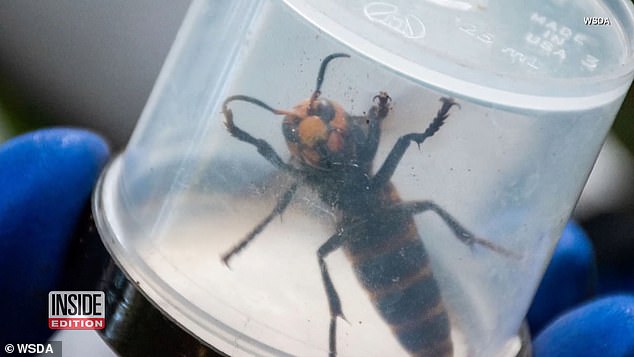
Washington state officials said that while eradicating the first Asian giant hornet nest of the season, the hornets attacked them
‘A few of us who working tightly in the area were approached by the hornets, and they did attempt to sting us this time.’
No one was injured in the attack and the extraction was completed in ‘just a few hours,’ Spichiger explained last month.
The team eventually removed bark and decayed wood near the bottom of the alder tree that provided entrance to the nest, which had nine layers of comb.
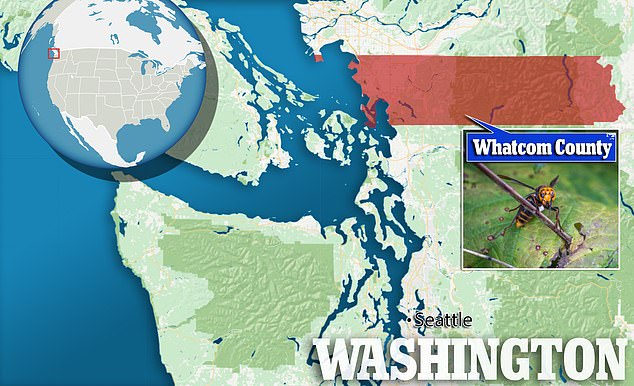
The nest, located near Blaine in Whatcom County along the Canadian border, was eradicated on August 25
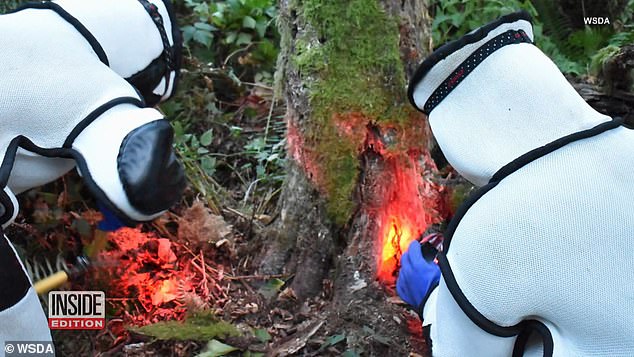
Washington State Department of Agriculture managing entomologist Sven-Erik Spichiger said this group was ‘more aggressive’ than the one found in 2020
The decaying tree was near Blaine, Washington in Whatcom County, along the Canadian border.
The nest was eradicated WSDA officials vacuumed 113 worker hornets from the habitat.
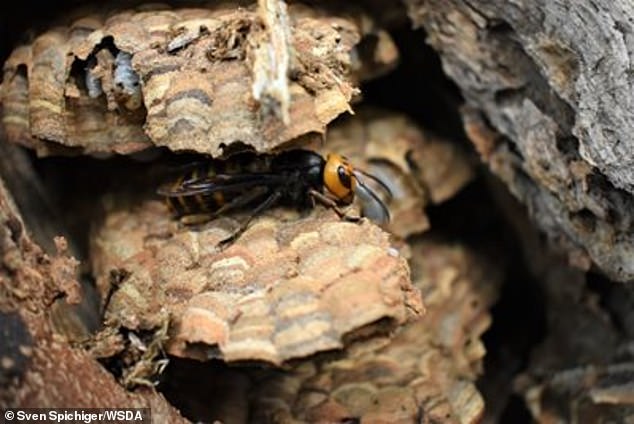
Washington State Department of Agriculture (WSDA) vacuumed 113 worker hornets from the habitat. They also caught 67 additional hornets in the area with nets during the mission to destroy the nest, which itself had nearly 1,500 hornets in various stages of development
In addition to the worker hornets vacuumed from the tree, WSDA staff caught 67 additional hornets in the area with nets during the mission to destroy the nest, which itself had nearly 1,500 hornets in various stages of development.
A portion of the alder tree was also cut and sent to a lab at Washington State University in Bellingham for a further analysis.
The nest was located about 2 miles from a different nest the agency eradicated last October and about one-quarter mile from where a resident reported a live sighting of an Asian giant hornet on August 11.

Asian hornets were first detected in the US in 2019 when a hornet was reported in Whatcom County. The nest, which housed 500 workers and 200 queens, was destroyed in an operation on October 24 (pictured)
The nest was discovered after officials netted three hornets and fitting them with tracking devices between August 11 and August 17.
The Asian giant hornets – the world’s largest hornet at two inches – are sometimes called murder hornets because they prey on other bees.
Although these invasive insects kill honeybees and native US hornets, they are not particularly aggressive toward humans.
However, their sting is extremely painful and repeated stings, though rare, can kill.
Despite the fact this nest has been eradicated, officials say it is imperative the public continue to help find this invasive species, which can decimate entire hives of honeybees, which are already under siege from mites, diseases, pesticides and loss of food.
In March, Washington state said it was making plans for the 2021 murder hornet season, similar to last year’s, emphasizing public outreach, reporting and trapping.
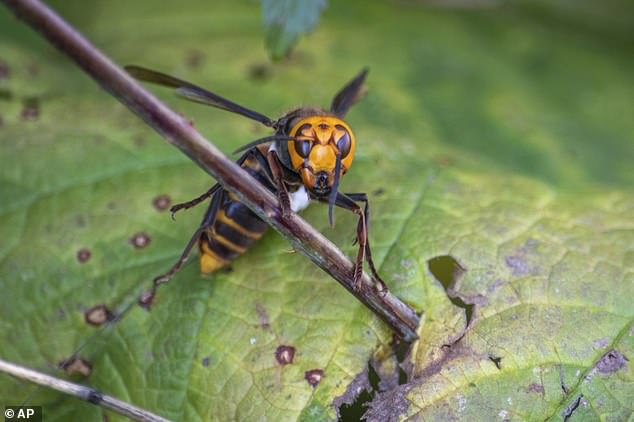
Murder hornets kill honeybees, which are already under siege from mites, diseases and other factors. They have an extremely painful sting and are the world’s largest hornet, at two inches
More than half of confirmed Asian giant hornet sightings in Washington and all in Canada came from the public, WSDA has previously stated.
The first confirmed detection of the hornet in the US was in December 2019 near Blaine and the first live hornet was trapped in July 2020.
The invasive insect is normally found in China, Japan, Thailand, South Korea, Vietnam and other Asian countries.
‘The hornets enter a “slaughter phase” where they kill bees by decapitating them. They then defend the hive as their own, taking the brood to feed their own young,’ the WSDA has said previously.
The agency has already killed six or seven hives in Washington State.
Despite their nickname, the hornets kill at most a few dozen people a year in Asia, and experts say it is probably far less but they do deliver painful stings to humans.
Hornets, wasps and bees typically found in the US kill an average of 62 people a year, according to the Centers for Disease Control and Prevention.
Murder Hornet statistics
Latin name: Vespa mandarinia
Adult length: 1 3/4 inches
Wingspan: Three inches
Sting length: Quarter of an inch
Description: Yellow face and large black and yellow striped abdomen. Large jaws and a noisy flier.
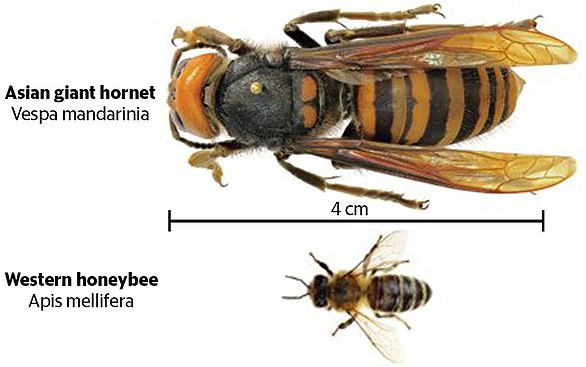
Asian giant hornets are more than double the size of honeybees, and have a wingspan measuring more than three inches
Natural habitat: Across Asia
Venom: It administers seven times more venom than a honeybee when it stings. This acts as a neurotoxin and can lead to seizures and cardiac arrests. The sting is described as incredibly painful.
Behavior: Insect emerges in April and nests in the ground. It predates on many insects, but particularly targets honeybees.
Risks Has a habit of sacking bee hives, decapitating the workers and stealing the young. The European honeybee has no defense against the invader. Its stings could also prove fatal to Americans.
Advertisement
Source link : https://www.dailymail.co.uk/sciencetech/article-9947251/Ultra-aggressive-murder-hornets-attacked-officials-arrived-remove-nest-theyd-built.html












